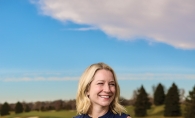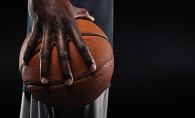Very few people know what it takes to compete at the highest level of any given thing. Certainly it’s a combination of commitment and passion, fortitude and hard work—sometimes with very little reward. For four young women from Plymouth, a mix of year-round training, whole nutrition and strenuous life habits is working for them. As a result, each is ranked among the top Nordic skiers in her age group in the nation.
Sarah Bezdicek, Nicole Schneider, Hannah Rudd and Amanda Kautzer train together year-round to compete separately with their high school Nordic skiing teams, and also as teammates with the Loppet Nordic Racing (LNR) program. They all share the goal of returning to the Junior Nationals competition in March. Schneider and Rudd had been skiers (and friends) for years, while Bezdicek and Kautzer came to the sport later, in junior high. But the four met in the LNR summer program in 2012 and became best friends during long training sessions that date back to spring 2013.
Winter Workouts
Interval training and time trials help the athletes prepare as the competitive season nears, so their peak performance comes through near the end of the school Nordic ski season, when state high school competition, junior national qualifiers and junior nationals occur. All four girls competed at last year’s junior nationals, and all four won all-American medals for placing in the top 10 of their age group in various events.
Kautzer finished first in the classic sprint race, winning her the title of national champion, which begs the question, “What happens when the camaraderie between them turns into head-to-head rivalry?” The answer is genuine sportsmanship.
“They challenge each other to be better,” says Bezdicek’s mom, Janet. Rudd’s mom, Kim, concurs: “They could get caught up in the competition and get their feelings hurt, but it isn’t like that,” she says. “If one does really well, they are glad for them.”
Year-round Nutrition
While training is critical, there are other things to attend to on the path to becoming a top-ranked athlete. All the skiers advise avoiding junk food and cutting out sugars, but beyond that dieting isn’t necessary. “After workouts, I stuff my face,” Schneider says, “but you have to eat healthy.” In fact, it can be hard to stay well-fueled during intense training. Kautzer’s mom, Julie, says her daughter once turned to her and said, “Mom, I’m still hungry, but I’m just sick of chewing.”
Discipline in other areas is important. As Bezdicek says, “Get enough sleep, make rest count, stretch, be organized. Little habits add up.” And don’t forget about the schoolwork. “It can be a challenge to keep up with studies, but you have to hunker down and get it done,” Rudd says. Don’t get discouraged by a rough start. “I decided to join Alpine skiing, but I went to the wrong room [in seventh grade on sign-up night.] I didn’t even know what Nordic was,” Kautzer says. “I was really bad, but in eighth grade I got better. If you have a bad race, give yourself five minutes to feel bad, then stop and start looking forward to your next race. Feeling bad won’t help.”
“We all have off days,” adds Bezdicek. “We just keep it positive and fight through it.”
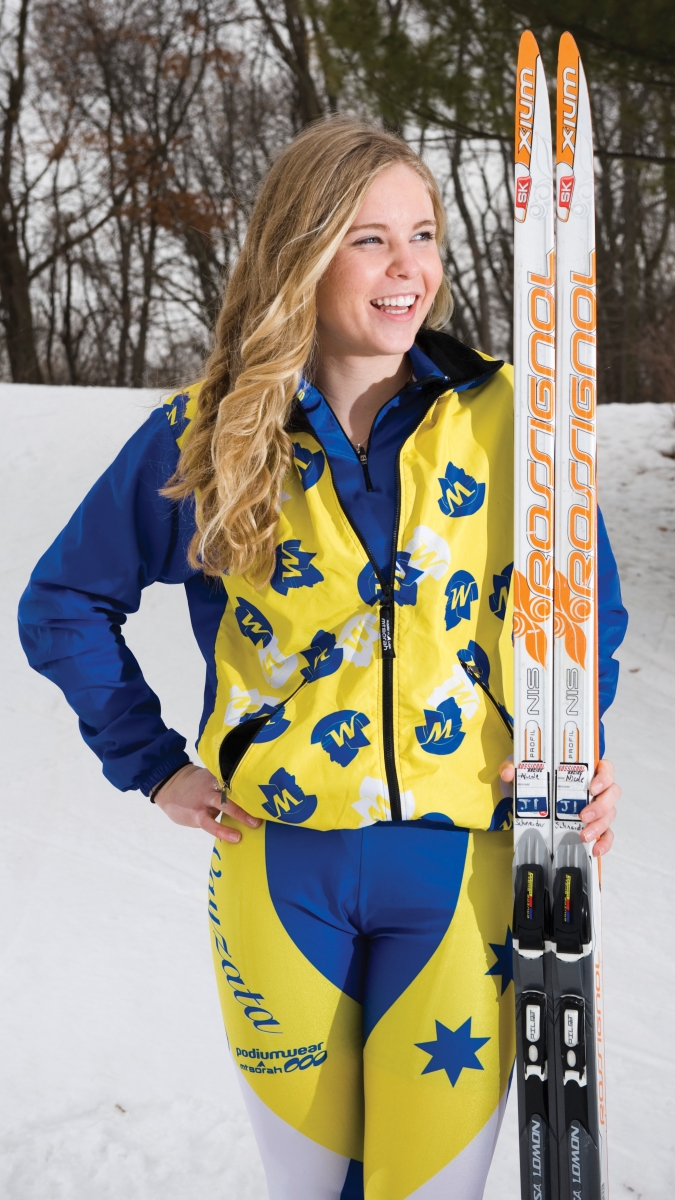

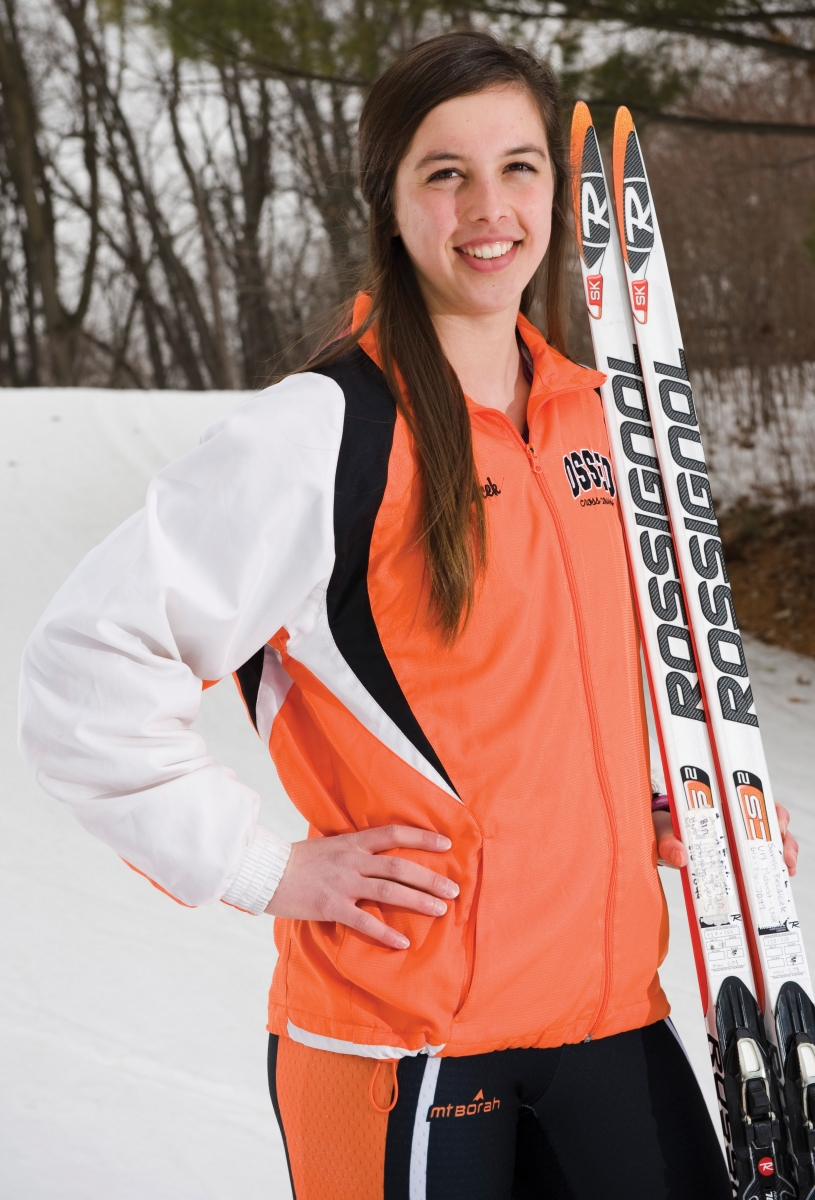
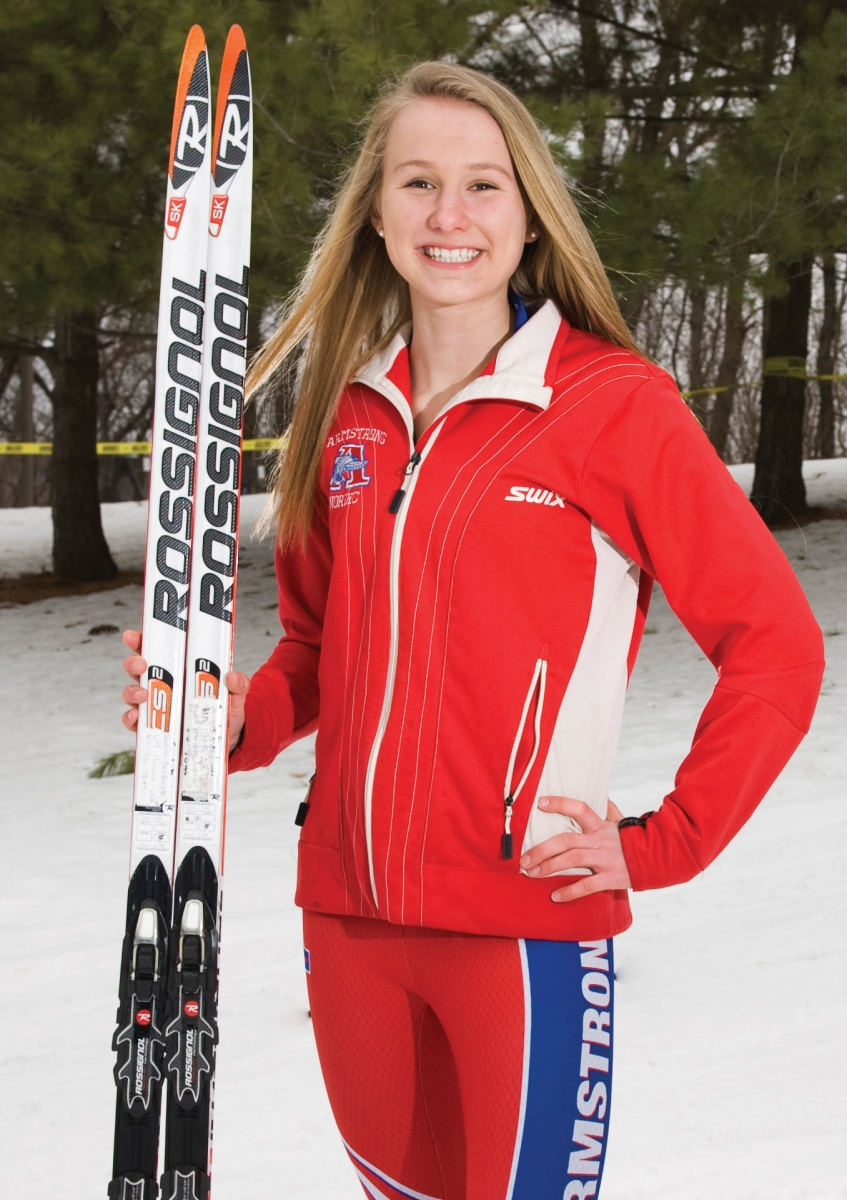
Nicole Schneider, Amanda Kautzer, Sarah Bezdicek, and Hannah Rudd.
Future Endeavors
The athletes are all making sure that their college plans include schools with strong Nordic programs. They also watched the last Olympic Games with great interest. Coach Bednarski says that Rudd and Kautzer will be age-eligible for the 2016 Youth Olympics, and he’s looking forward to seeing how that opportunity plays out. Meanwhile, the athletes and their parents praise Bednarski for more than great results.“He always makes you feel better after a bad race” Kautzer says. “He cares about your well-being more than winning.”
Bednarski shares the credit: “All four are motivated athletes and hard workers who have a ton of parental support,” he points out. “To do any sport at a high level, you have to have that.” He also cites their friendship as a powerful factor: “Their main motivation is training together.”
So maybe the answer to becoming a top athlete goes beyond what you do in training to why you do it and what keeps you going:
“I love long skis with my friends, when the sun is out and snow is sparkling. If you don’t enjoy being outside, you won’t appreciate skiing that much and won’t get results,” Kautzer says.
“I love the places skiing takes me, love the people in skiing; it just makes me happy. I love doing it,” Schneider says.
“When you work at something so hard and so long, it’s fun to see the results,” Rudd says. “I will have my entire life to ski; it’s fun to go fast and do it with the people I love.”
“I love to be training with my best friends and be outside in all seasons,” Bezdicek concurs. “We just love the sport so much, it makes us do it.”

For these Nordic skiers, there’s more to their sport than just time on spent on their skis in the wintertime. Here’s a rundown of what the rest of the year looks like in the lives of these competitive young women.
Spring Slowdown
Training under the watchful eye of LNR coach Piotr Bednarski begins after about a week of recovery following the preceding junior nationals, held last March in Vermont and slated for Stowe, Vermont this year. Because the weather can be unpredictable, “there is a limitation on how many hours our athletes can get on snow,” Bednarski says. The girls ski as long as the snow lasts, shifting to running and strength training as spring takes hold. Around mid-May, the skiers pull out the roller skis.
Summer Stretch
The roller ski workouts are supplemented with cross-training in the LNR summer program, starting the day after school lets out. Schneider says she is always excited about summer training since she spends time with the others. This is in spite of the early mornings—practice starts at 7 a.m. five days a week. “It isn’t so hard to get up at 6 a.m. when you know you are going to see your best friends,” Bezdicek says. Regular training consists of 10 to 15 hours per week of running and cross-training, with strength-training sessions mixed in. During the summer, training can be up to 15 or 20 hours each week. Monthly camps involve packing up and getting away for a week, with multiple workouts per day and some downtime for fun. “The hardest workouts are the best workouts,” Bezdicek says. “They make us the best skiers. You really go places when you are training.” Rudd adds that she loves the “Eco-challenges,” or five- to six-hour workouts of running, roller skiing, bike riding and sometimes swimming, that LNR hosts in summer and fall.
Autumnal Activity
In the fall, roller-ski training continues five times a week, with a run at least once a week—but now, the athletes are all looking forward to getting back on the snow. A trip to West Yellowstone over Thanksgiving weekend helps the skiers build “volume,” by skiing for two or more hours at low intensity twice a day. “We have so much fun,” Schneider says. “We sing to each other and tell stories and talk. It is a good time.” Approximately 70 athletes go on the trip; most make it a road trip via car or bus, some with their families and others with groups of friends or teammates.
For more information about competitive Nordic ski opportunities, check with your middle or high school. While many other sports have to pare down their teams, most high school Nordic programs are able to add new skiers and even help them find or rent equipment. For more information on the Loppet Nordic Racing program, visit loppet.org/loppet-nordic-racing.







